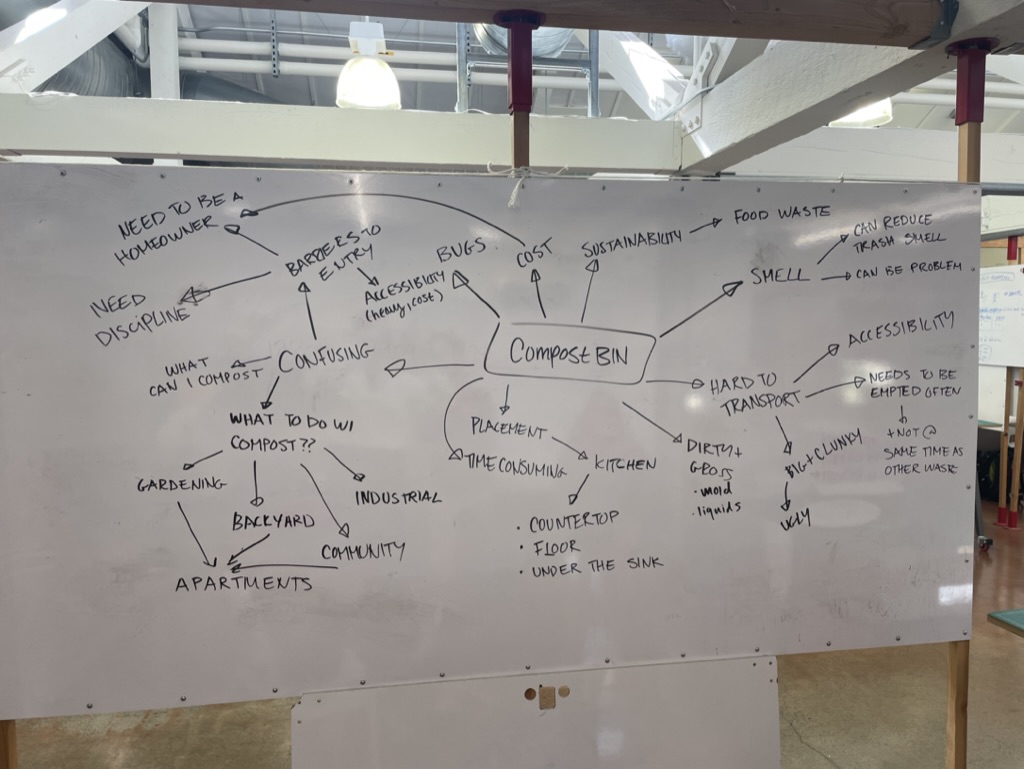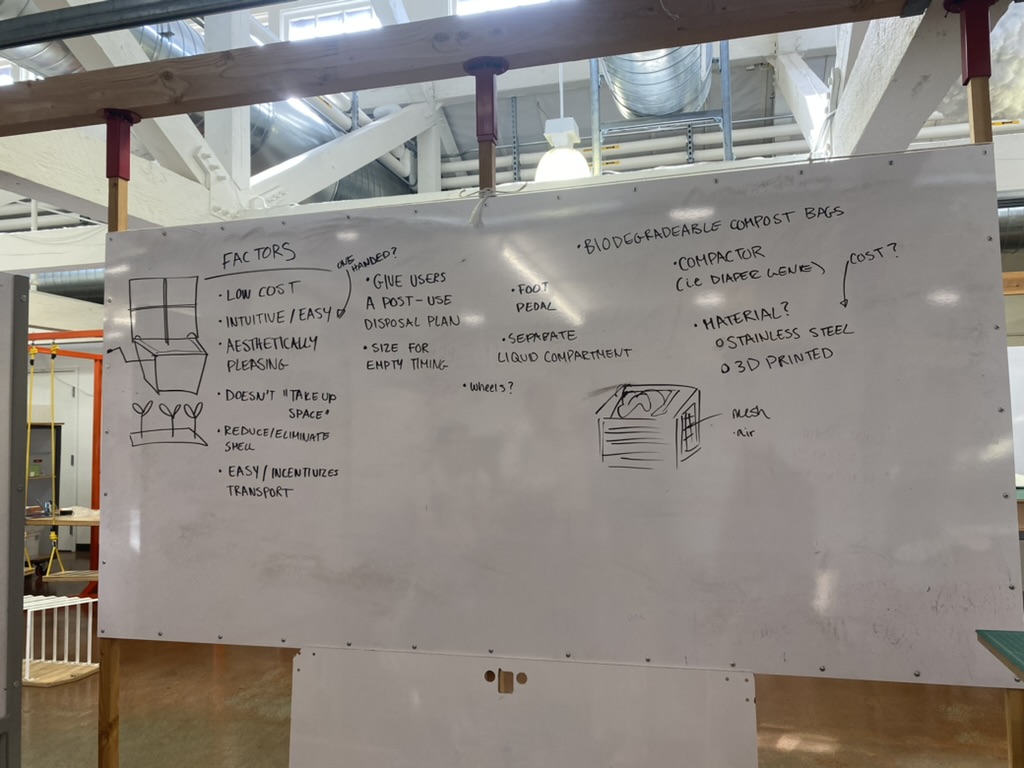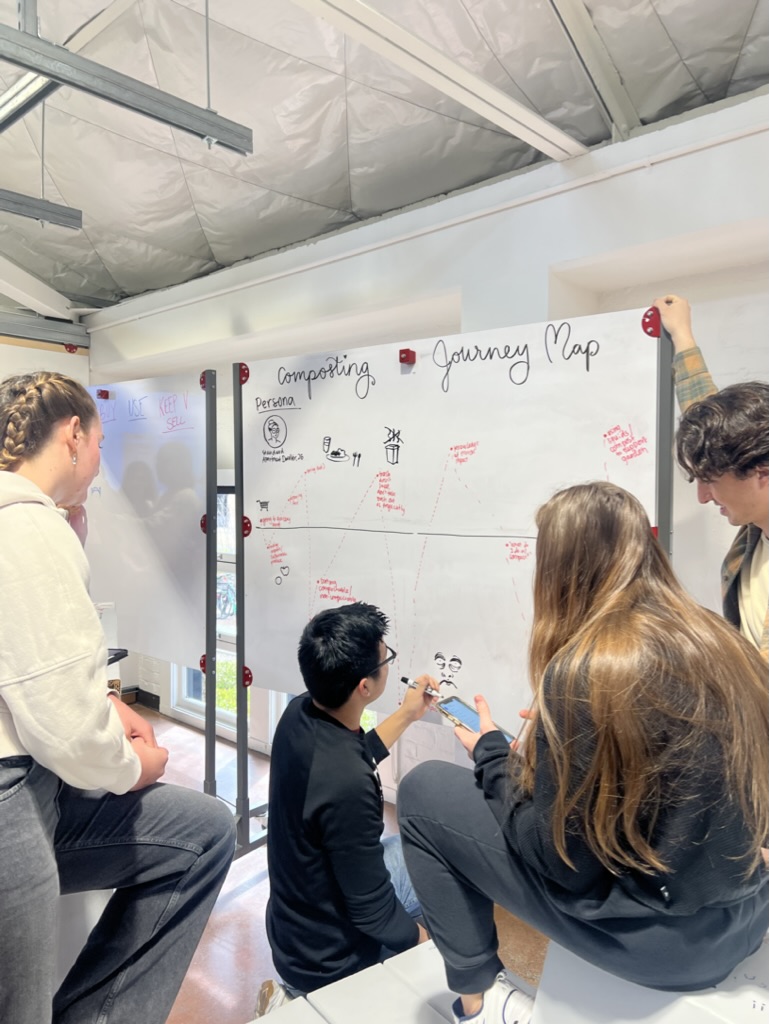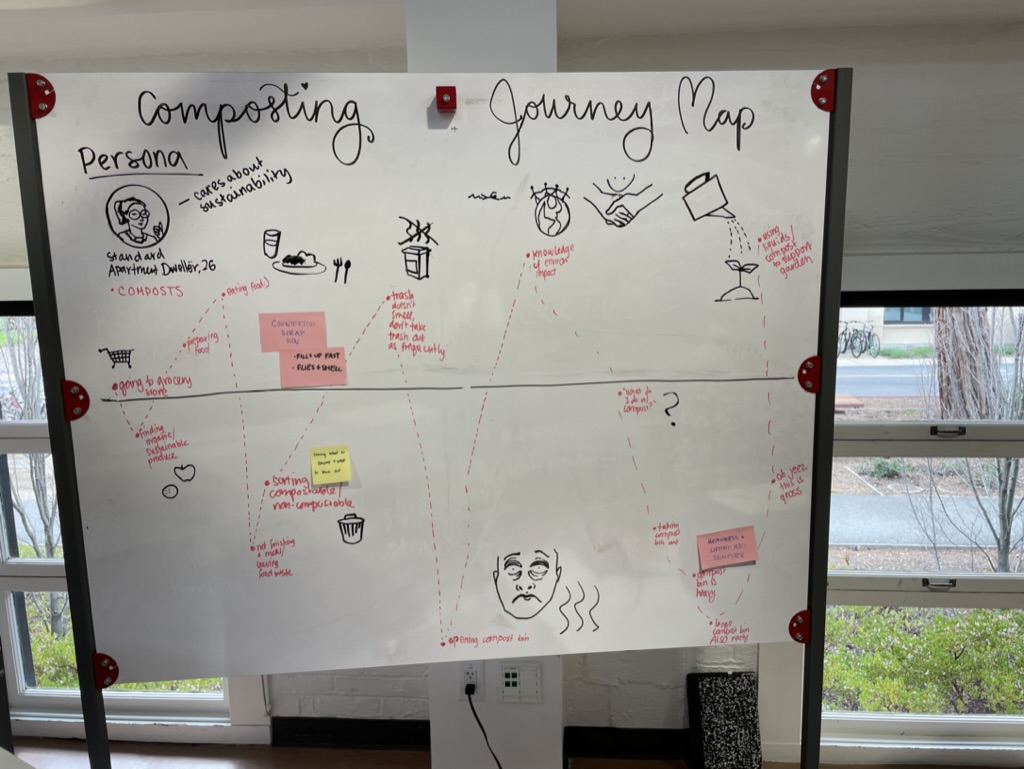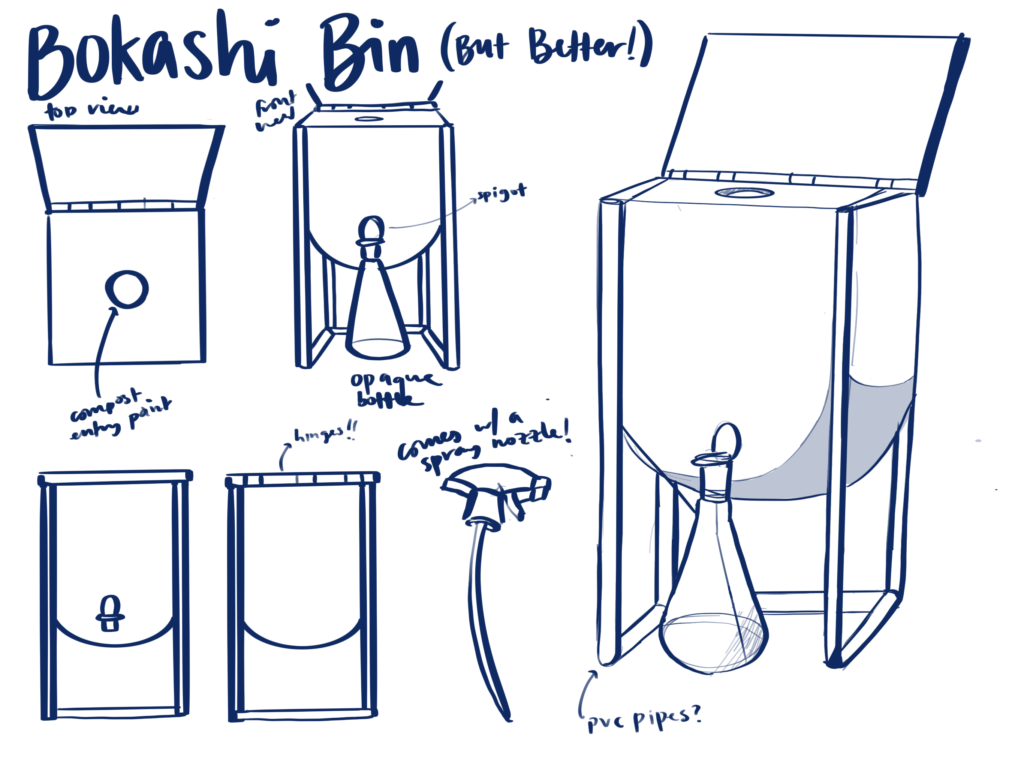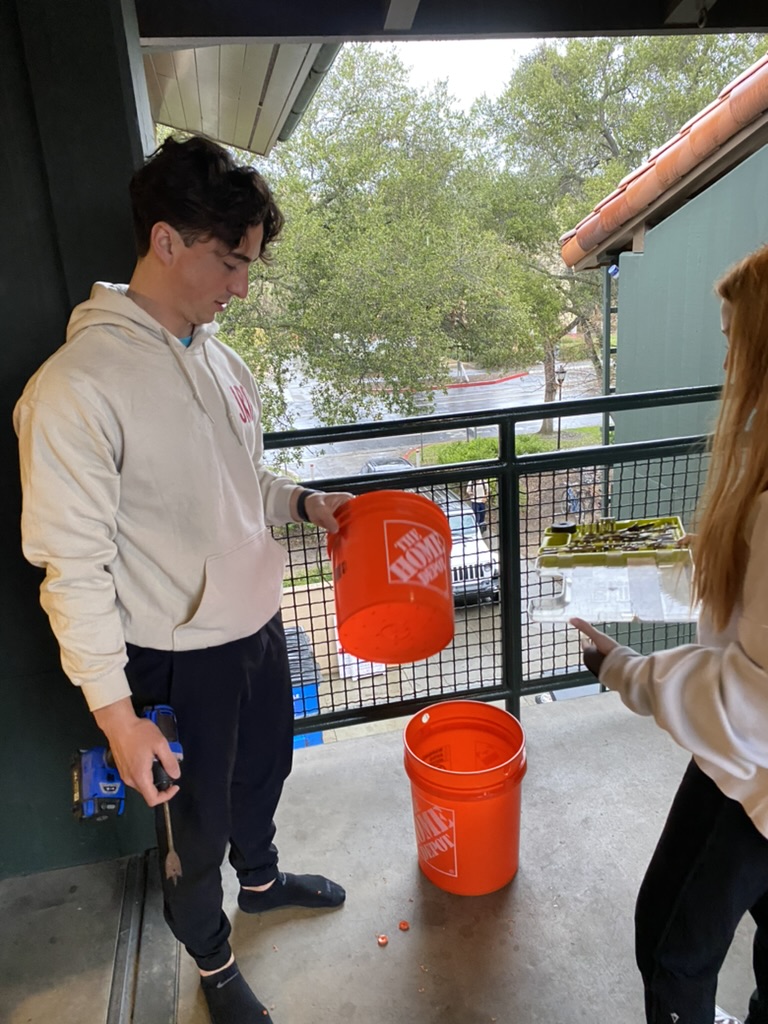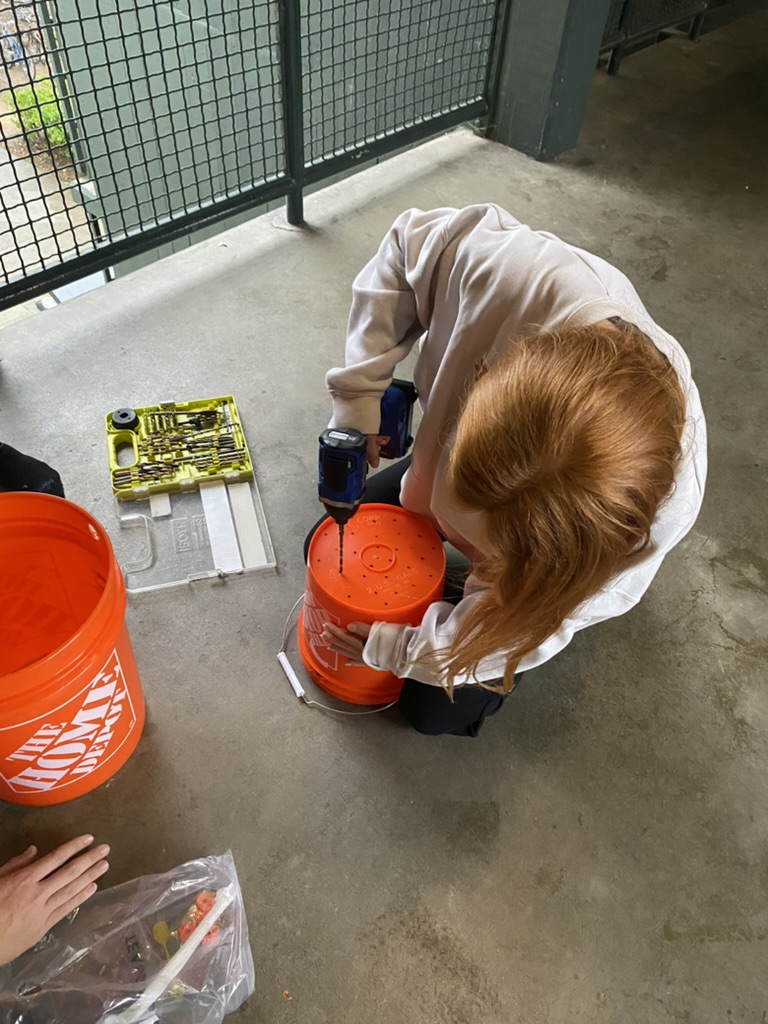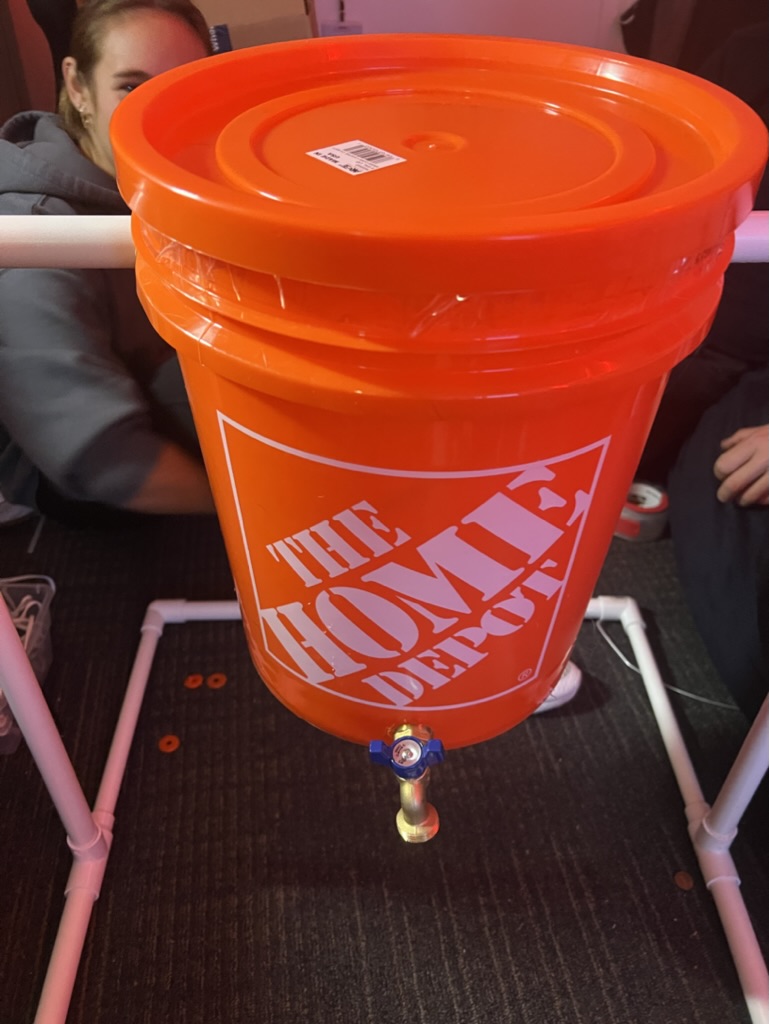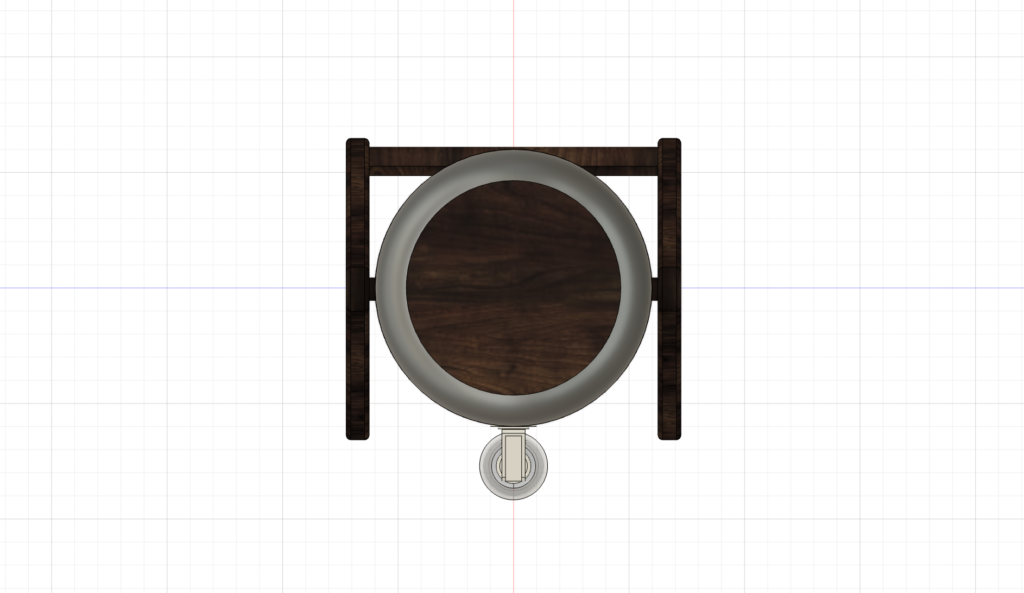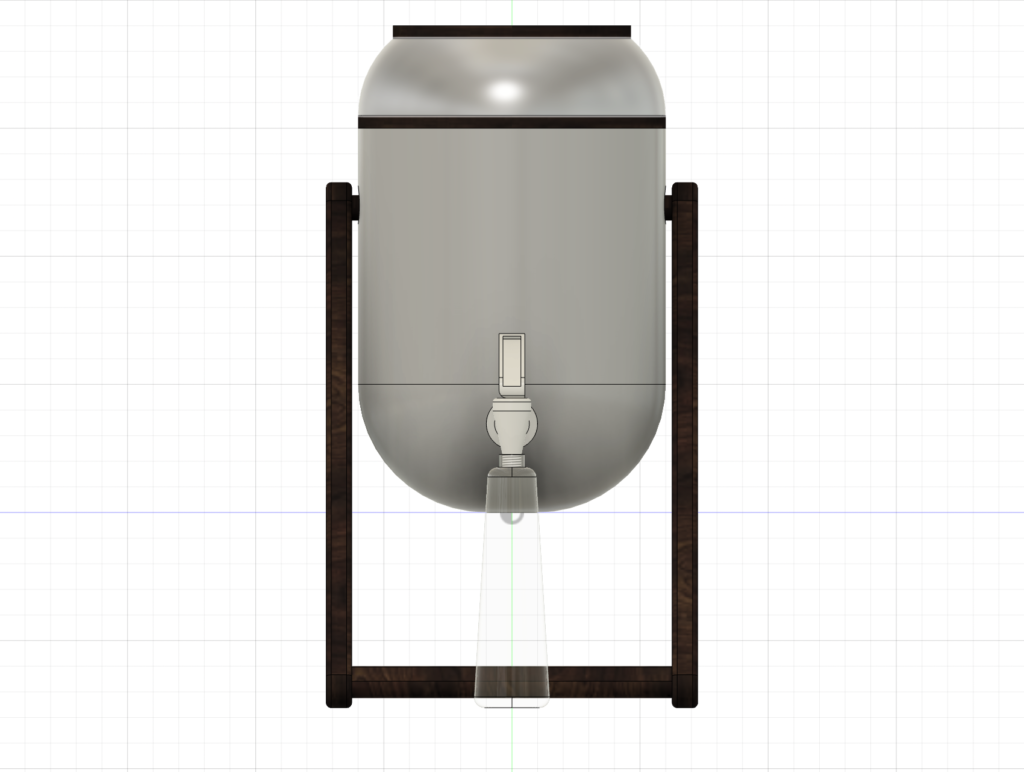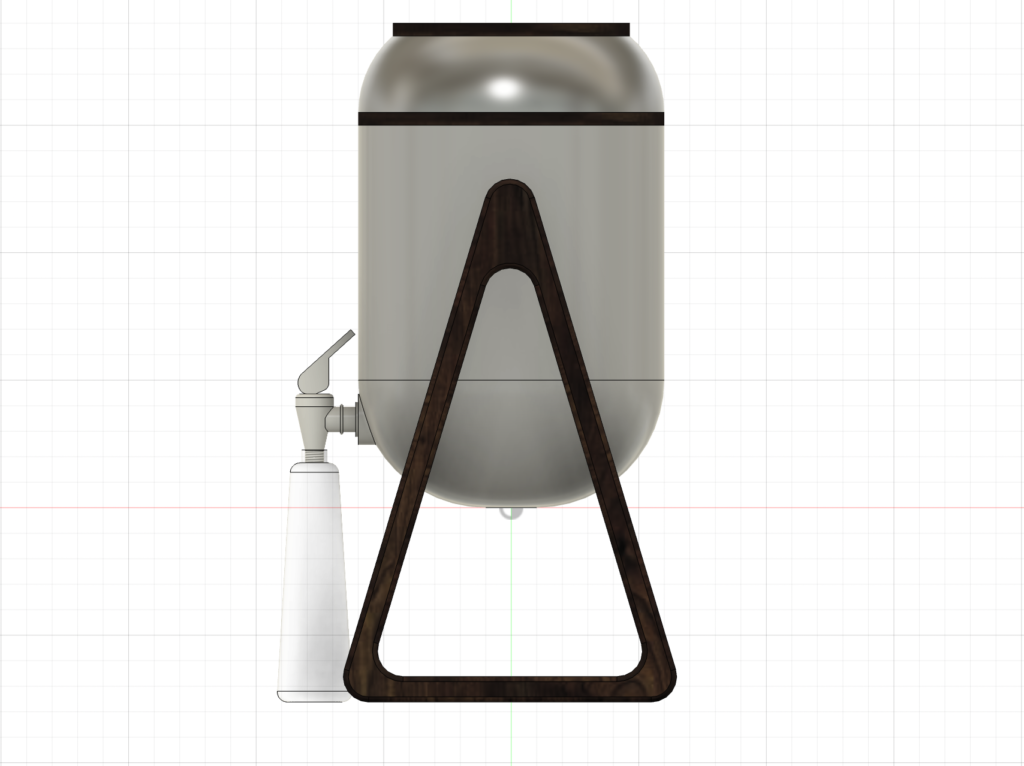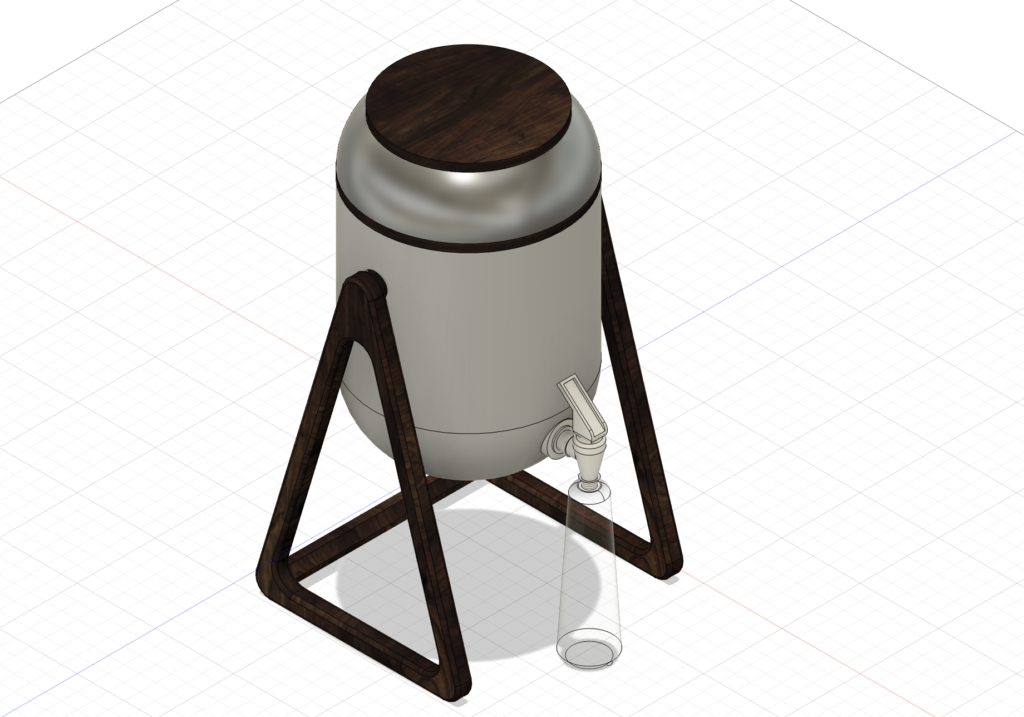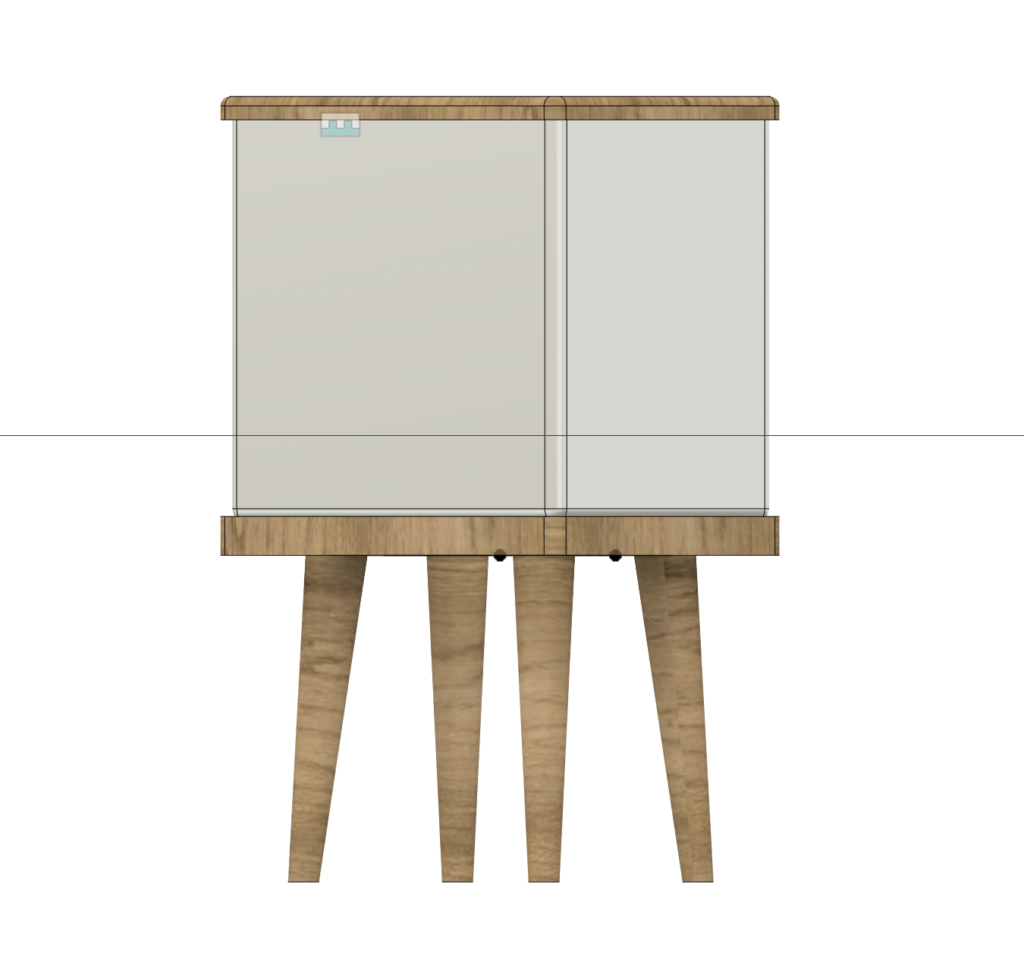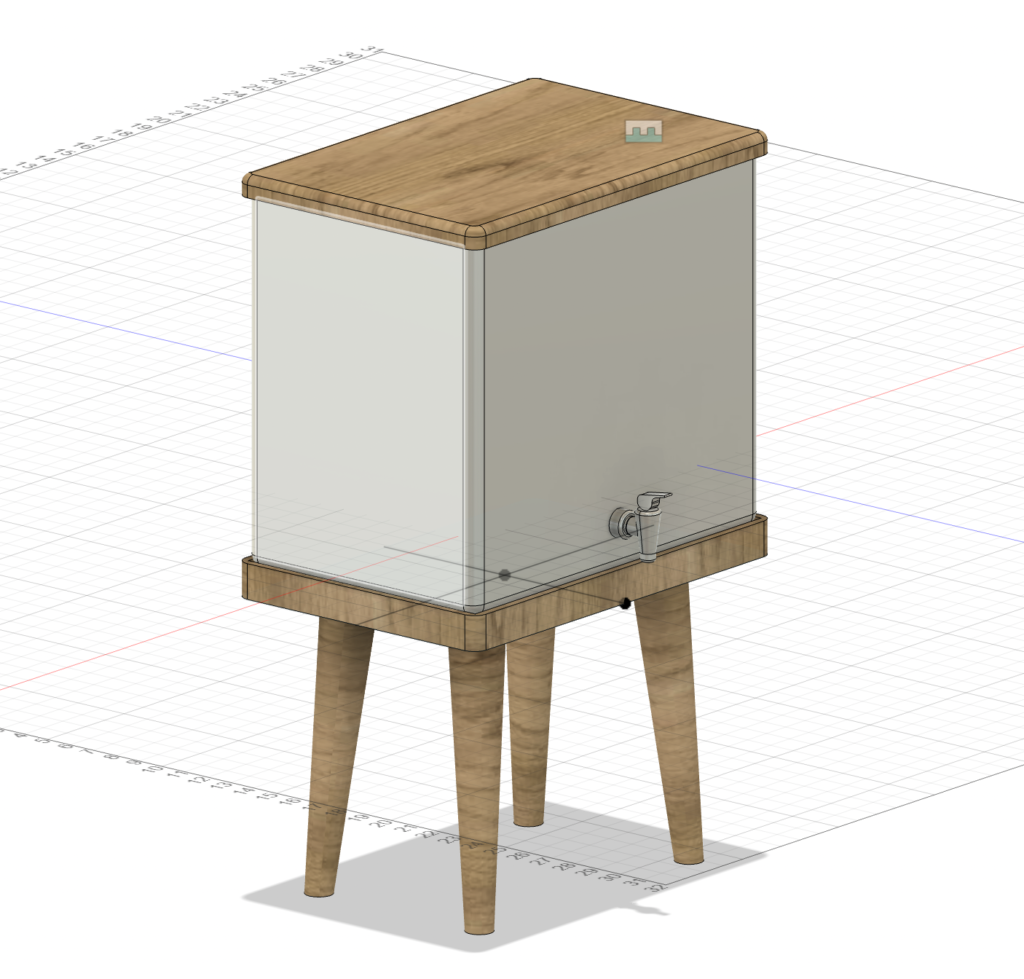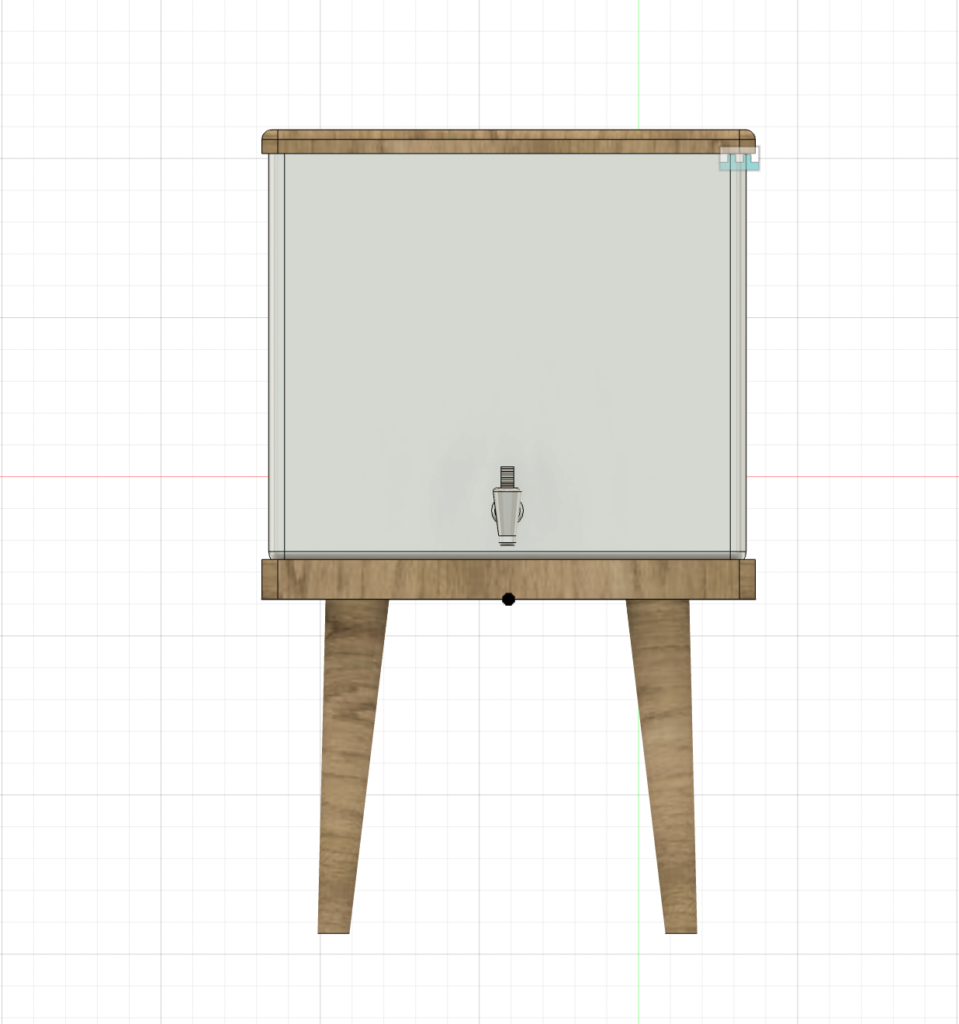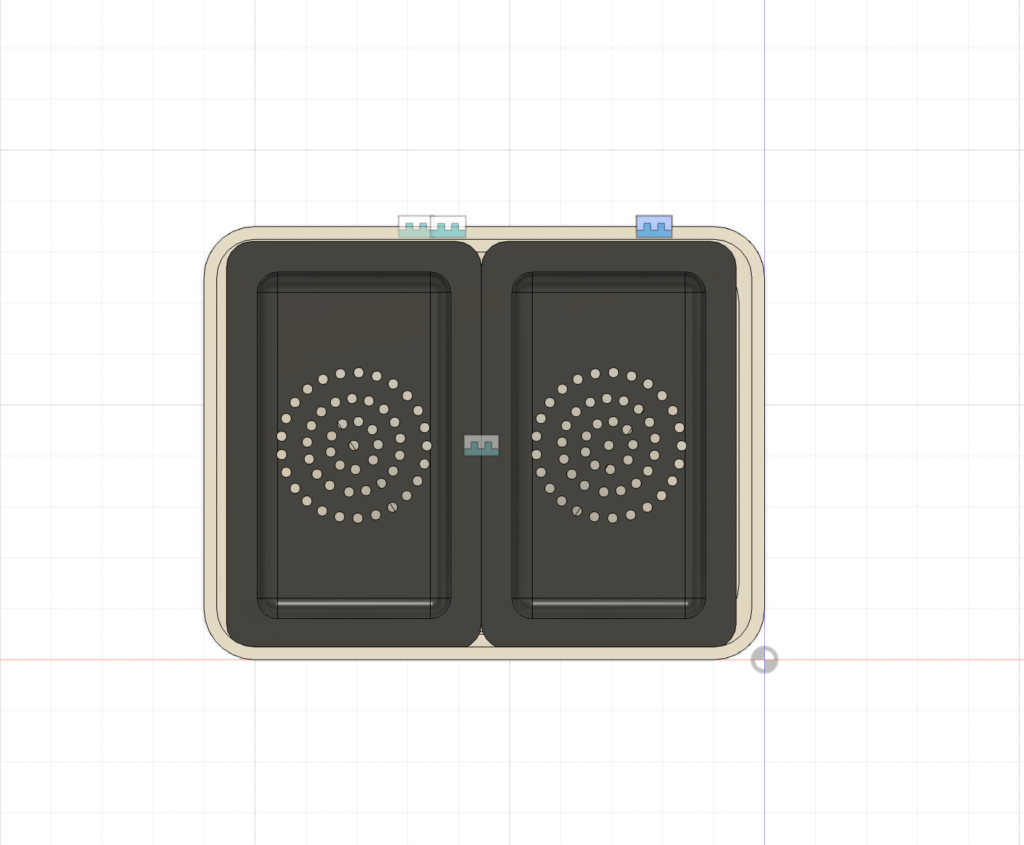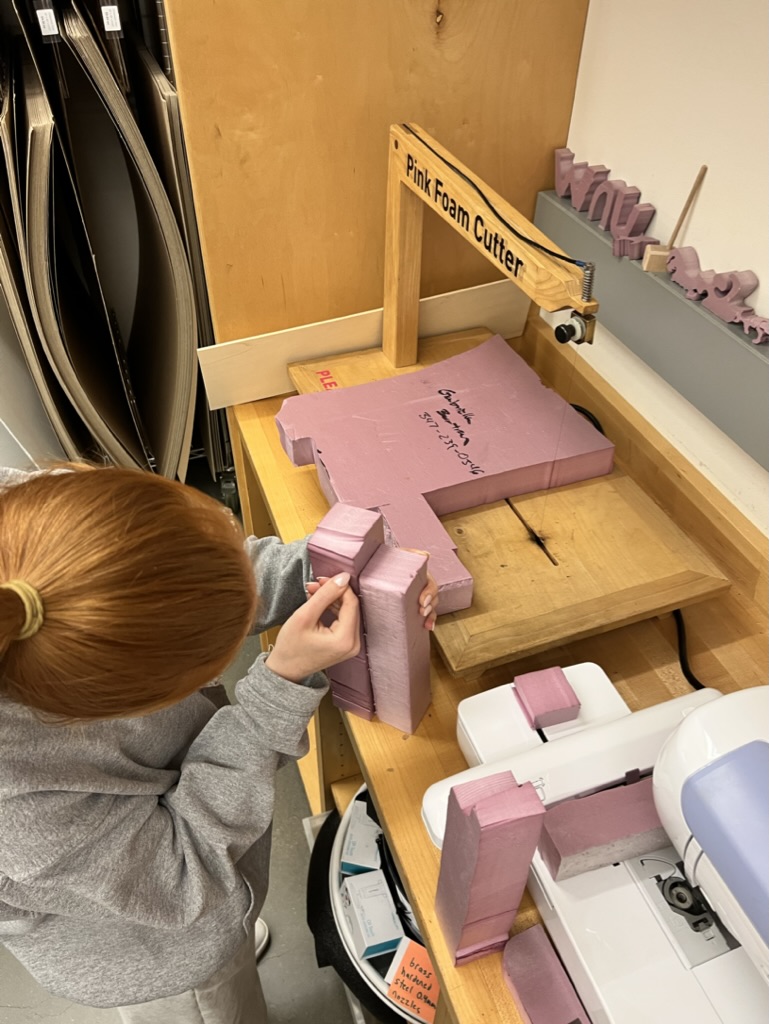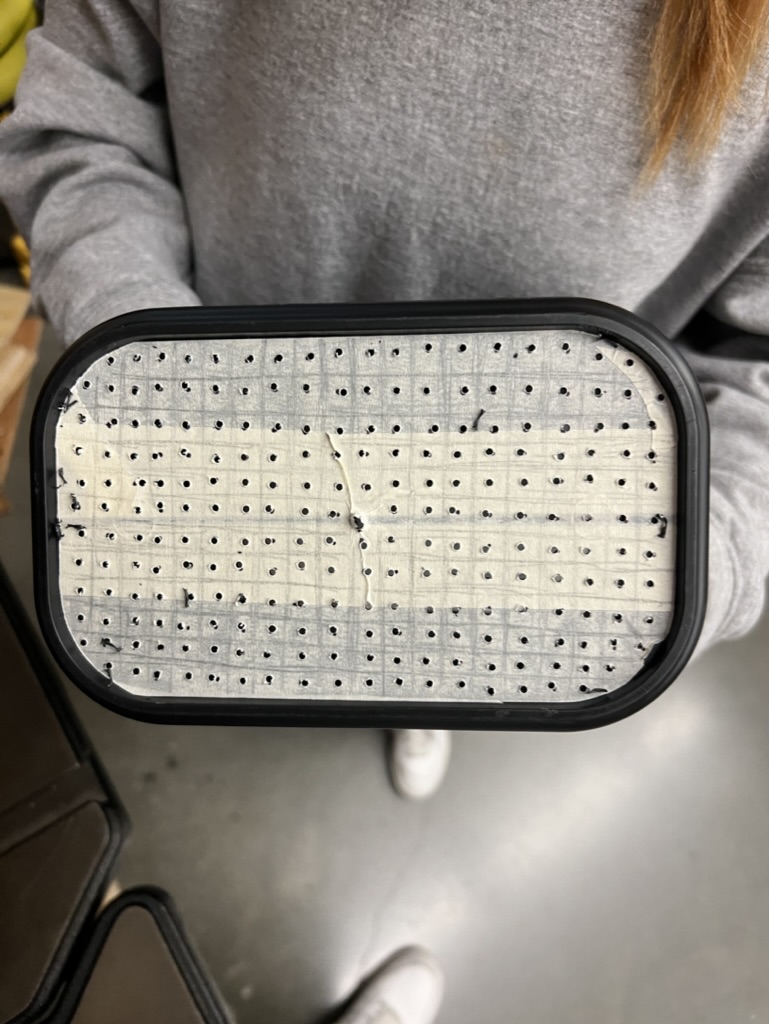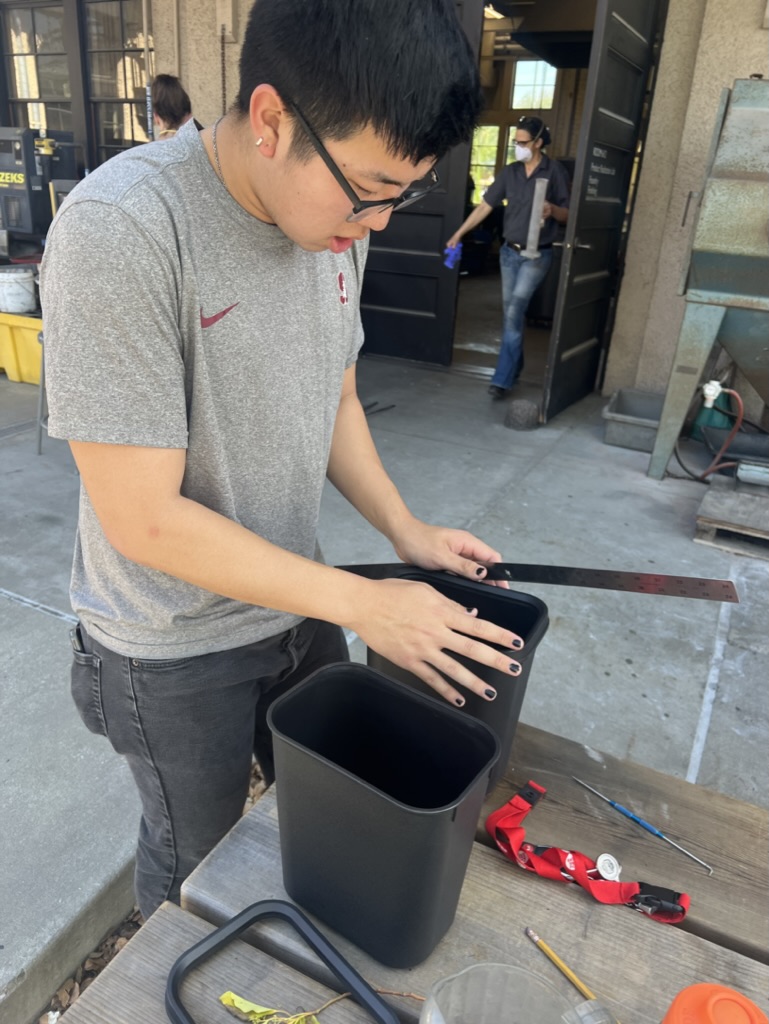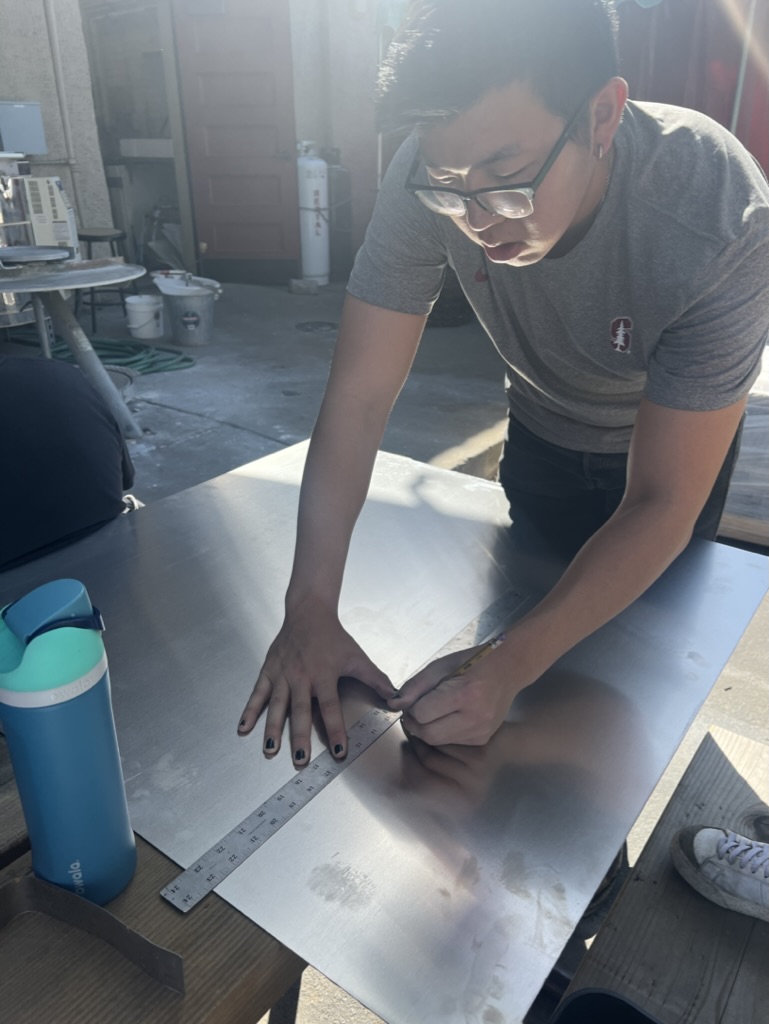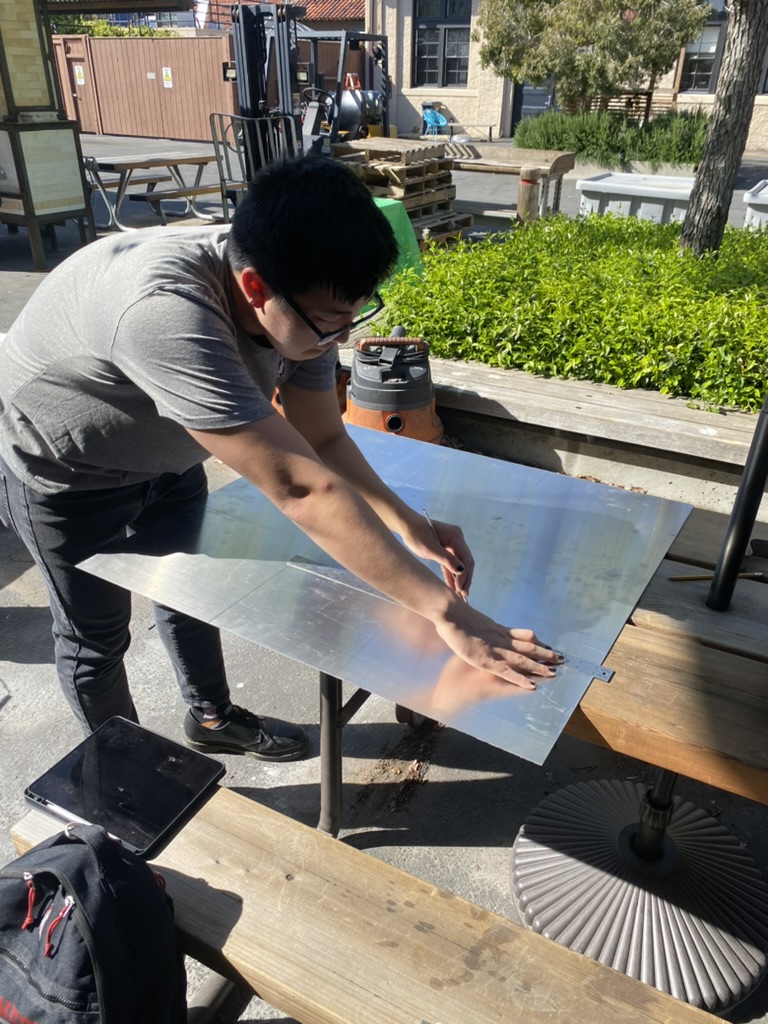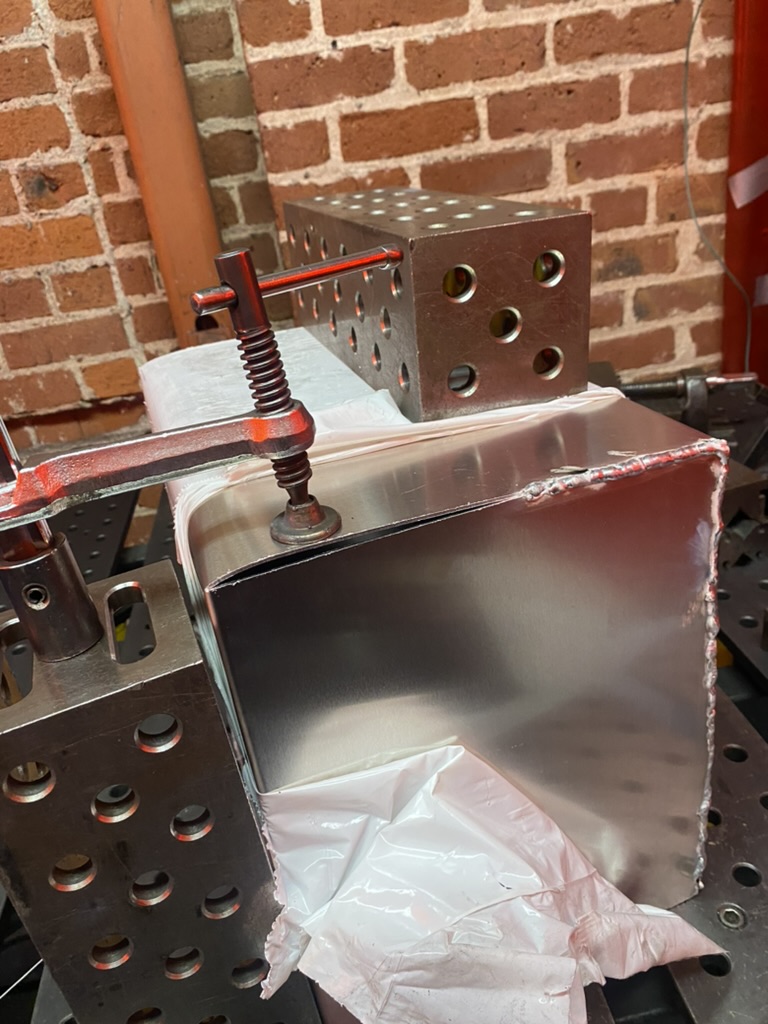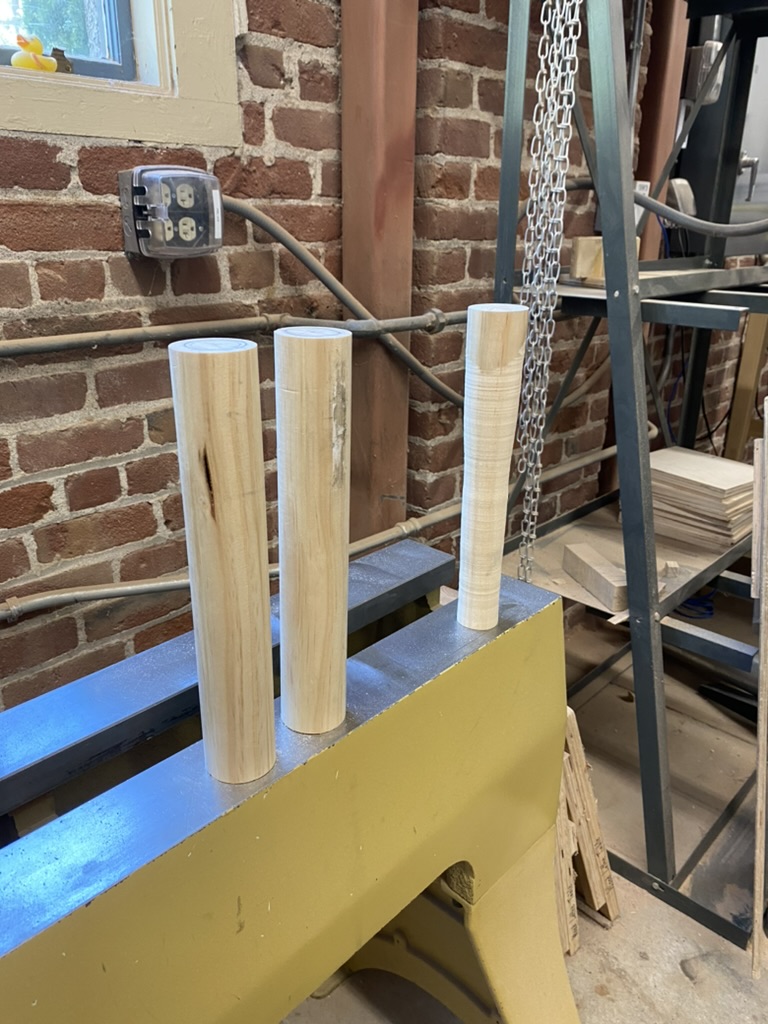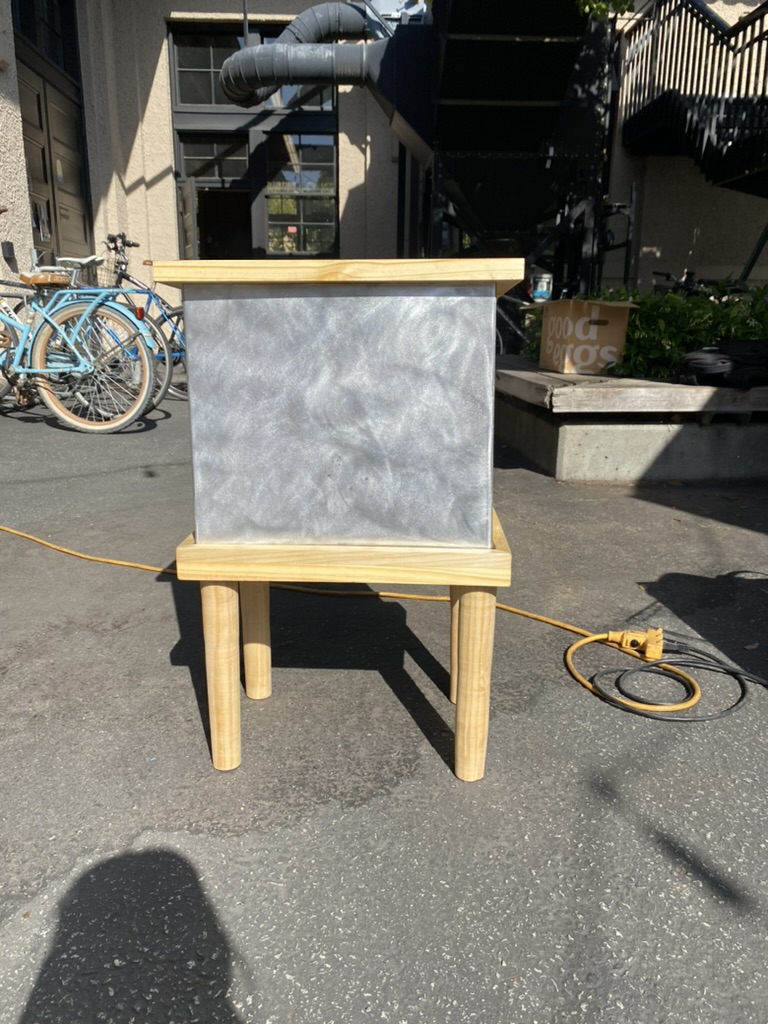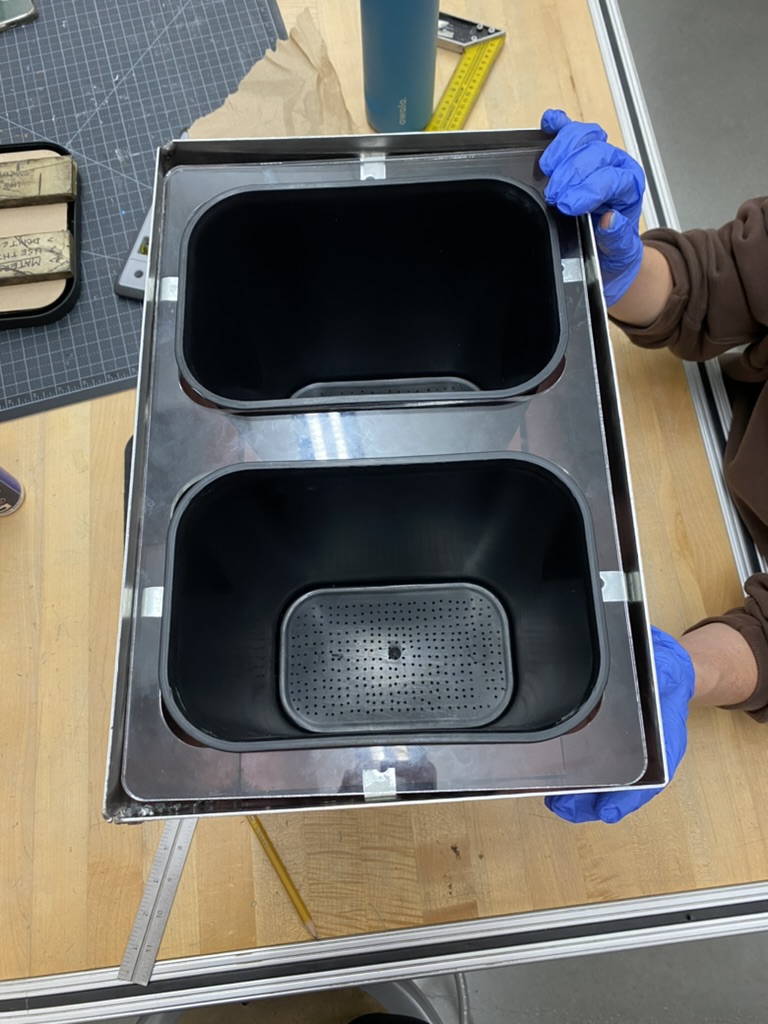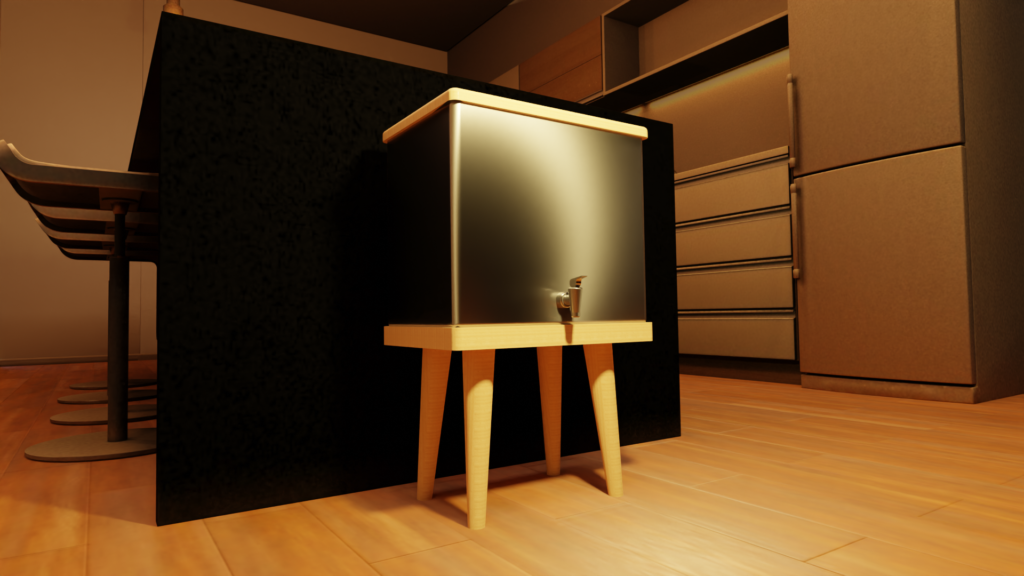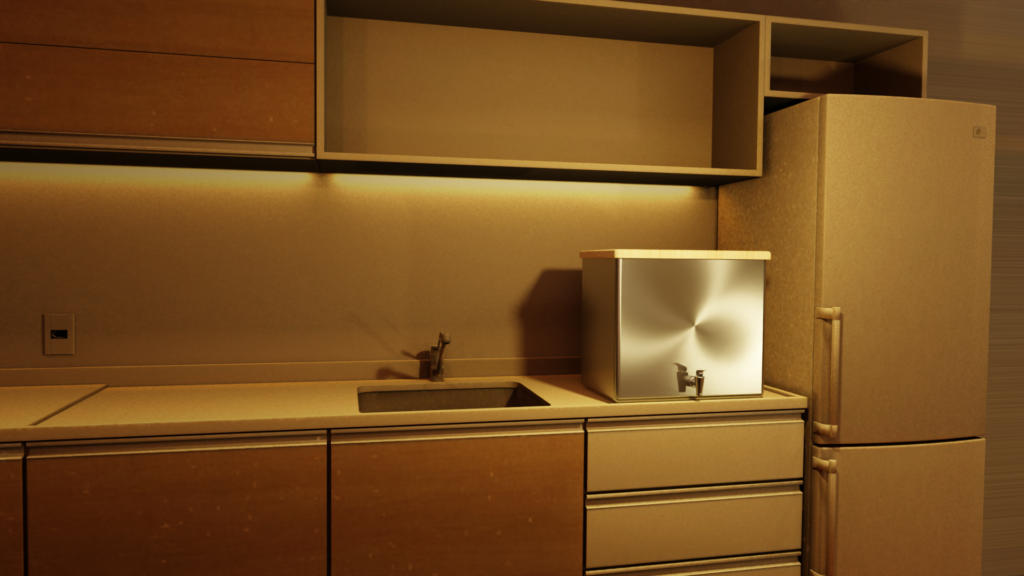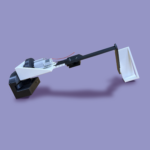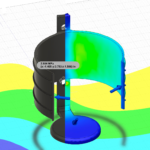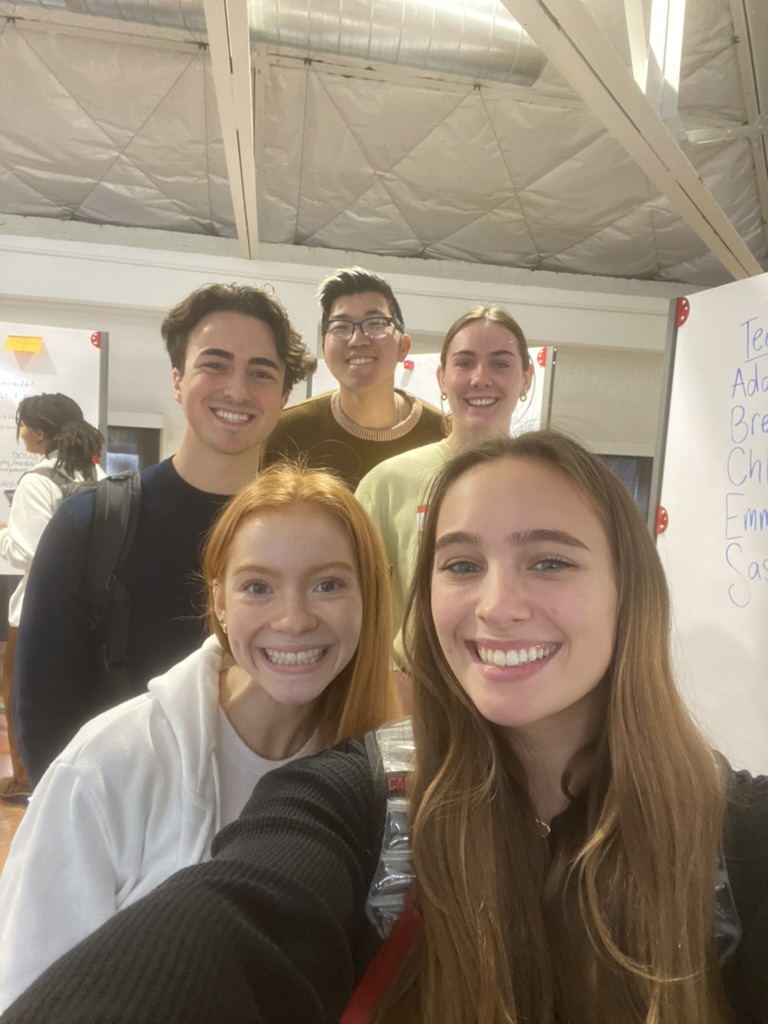
This project was designed with my teammates Addie Stonecipher (Stanford ’23), Chloe Widner (Stanford ’23), Emma Wheal (Stanford ’23), and Sasha Lascar (Stanford ’23) for our ME216: Advanced Product Design Capstone class. We named ourselves the Fab Five.
All of the members in our group were really focused on sustainability in our product design. We were all motivated by a desire to create a better future, and one way that we wanted to work toward this goal was by decreasing food waste. If you want, check out our final presentation (also featured at the end).
Composting
We were all familiar with composting, in the sense of the yellow food waste buckets provided by local governments and the green compost bins that people often fail to distinguish from their blue or gray counterparts. People seem to be deterred by composting but are just as excited by gardening. Upon conducting some need-finding research, here’s what we found out about the composting experience:
I don’t really compost, I tried to do it at home but…[didn’t work out because of] space
Megan Rogers, age 22
[When asked if the bin is big enough] Oh no, not at all. I have to [walk down a flight of stairs to] empty it several times each week
Patricia Crisera, age 81
Here are some of our insights about composting. Young people do not compost despite caring about the environment because:
- Carrying extra bags to the trash bins is a major barrier to composting
- The barrier to entry is too high for people to feel comfortable to start composting
- Existing tech is either expensive, complicated to assemble, or confusing for people who don’t know how to get started
- Other major deterrents like smell, accessibility, difficulty, size, frequency of emptying process, lack of long-term benefits
Familiarizing Ourselves with Bokashi
Keeping that some of the major barriers to composting that we identified were smell, frequency of disposal, and lack of long-term benefits, we did some more research on how to make composting more accessible, especially for younger people. Young adult non-homeowners (living in dorms or apartments) make up a significant percentage of people in the world and are often the least proactive about decreasing food waste.
We came across the Bokashi composting method: Bokashi means “fermented organic matter” in Japanese and it is a method of composting that involves layering kitchen scraps with bran. The scraps ferment and create a liquid that can be used as a natural plant fertilizer.
Bokashi Benefits
- Eliminates odor
- Works in small spaces
- Only emptied every 2 weeks
- Lets users compost virtually any type of food waste, from meat and dairy to citrus peels
- Produces a nutrient-rich liquid that lets users benefit from composting without dealing with the mess of soil
Bokashi Disadvantages
Bokashi composting is not perfect. Some major disadvantages are:
- Bokashi can be labor-intensive and ugly; mostly suitable for avid composters and gardeners
- There’s a 2-week fermentation period, requires compression/mixing of food, fertilization liquid is difficult/gross to drain
As a result, our team sought to design a product that leverages the advantages of Bokashi composting and mitigates the disadvantages.
Initial Combo Designs
Prototyping
Following our initial concept sketches and journey maps, our team had a direction to move toward bringing composting to young adults everywhere. Our initial prototype featured a swiveling set of two concentric Home Depot, with the interior bin featuring a number of punctured holes to allow the food waste and fermented liquids to pass through. The design featured a spigot at the base of the design, and a rather simple–yet effective–lid to seal the food waste inside. We used materials from Home Depot (namely bins and PVC pipes) and tested the prototype by storing food waste in the bin for a period of time to test the efficiency of the Bokashi bran (purchased from Amazon).
CAD Sketches
Our initial CAD sketch, designed in AutoCAD Fusion360, resembled our physical prototype in functionality. It features a similar dual-bin system, a swiveling stand, and a spigot at the base of the bin.
As we 3D printed our initial CAD design, we realized some built-in flaws with the design. Without any form of stopper, the swiveling method resulted in the bin rotating uncontrollably, only exacerbated by the fact that the food waste would imbalance the bin.
Revisions to the Design
We then adjusted the design to no longer feature a swiveling design, but instead added a sloping base to the interior of the outer bin, so that all of the contents of the bin would be sloped down to the front (where the opening of the spigot is positioned). Instead, we created a stand with four legs for the bin to stand on. However, we also realized that–in designing this bin for young adult non-homeowners–we should create something that is fit for compact kitchen spaces. We decided to make the compost bin separable from the stand so that it could be comfortably placed on a kitchen counter or otherwise.
The swiveling feature was not the only change to our design. We also considered the fact that Bokashi bran takes two weeks to ferment, and thus the fermentation process would render the bin unusable for the two-week period. As a result, we decided to create a sealed dual-bin design, where there are two interior bins instead of one. Consequently, the user can fill one bin and seal it, but then continue using Bokashi bran with the other bin while the contents of the first bin ferment for the two-week process. Meanwhile, the bin continues to produce the Bokashi “tea”, which can be used as a liquid fertilizer for gardening.
Combo Construction Process
We then spent a significant period of time assembling the Combo bin. We underwent a number of machining processes, including wood turning, sheet metal bending, and TIG welding. Check out a couple of our progress shots below!
One area of complication was the fitting of the lid onto the bin. We needed to prototype a number of designs in order to be successful in ensuring that the bin was secure and the lid was airtight.
Combo Media
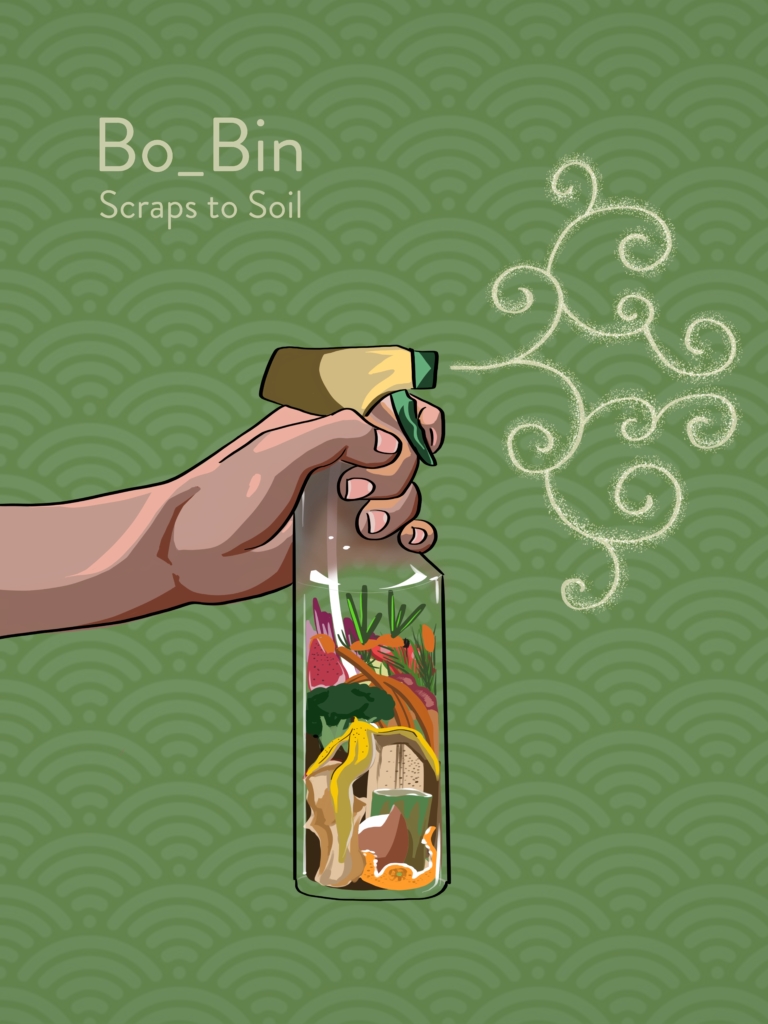
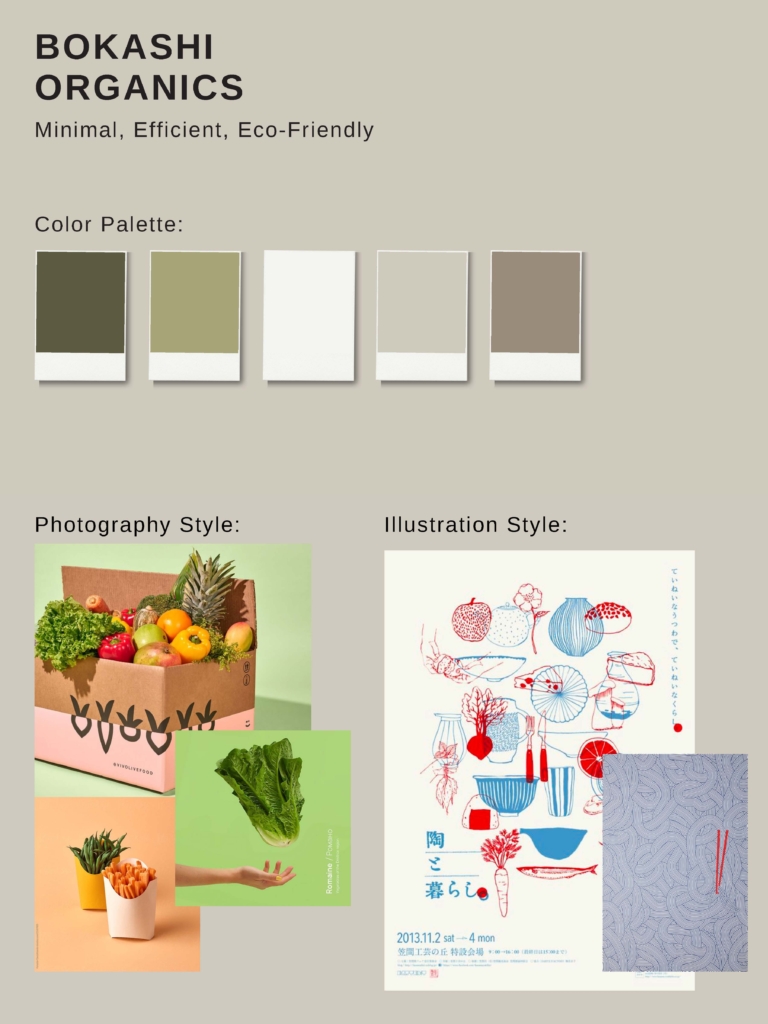
Why Combo?
- Dual-Bin design for around-the-clock composting
- Aesthetically attractive
- Spigot automatically drains tea into a spray bottle
- Plunger for no-contact compression
- Removable stand for versatile placement in small spaces
Combo in Use
- Hand-off Combo to be used in everyday life
- Findings from in-situ user testing will be reported back and considered for improvements to Combo in the future


